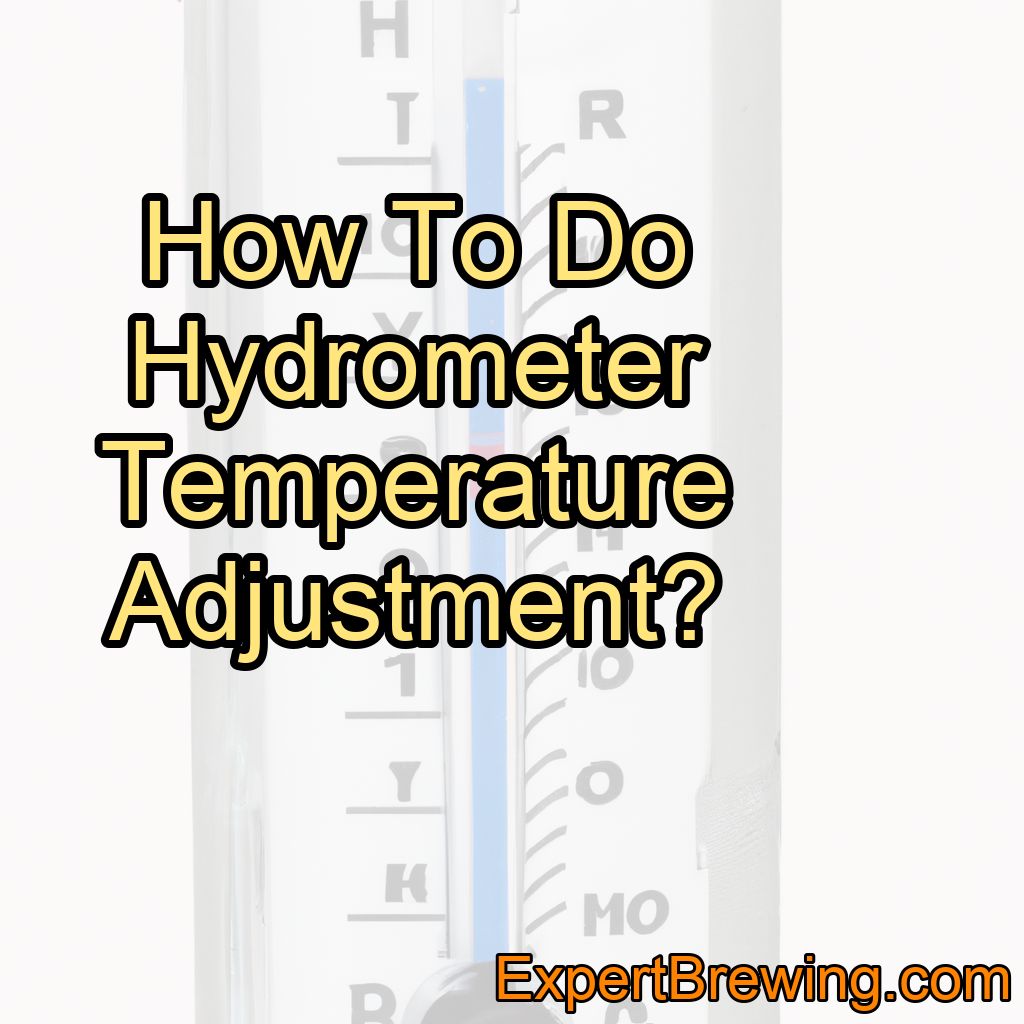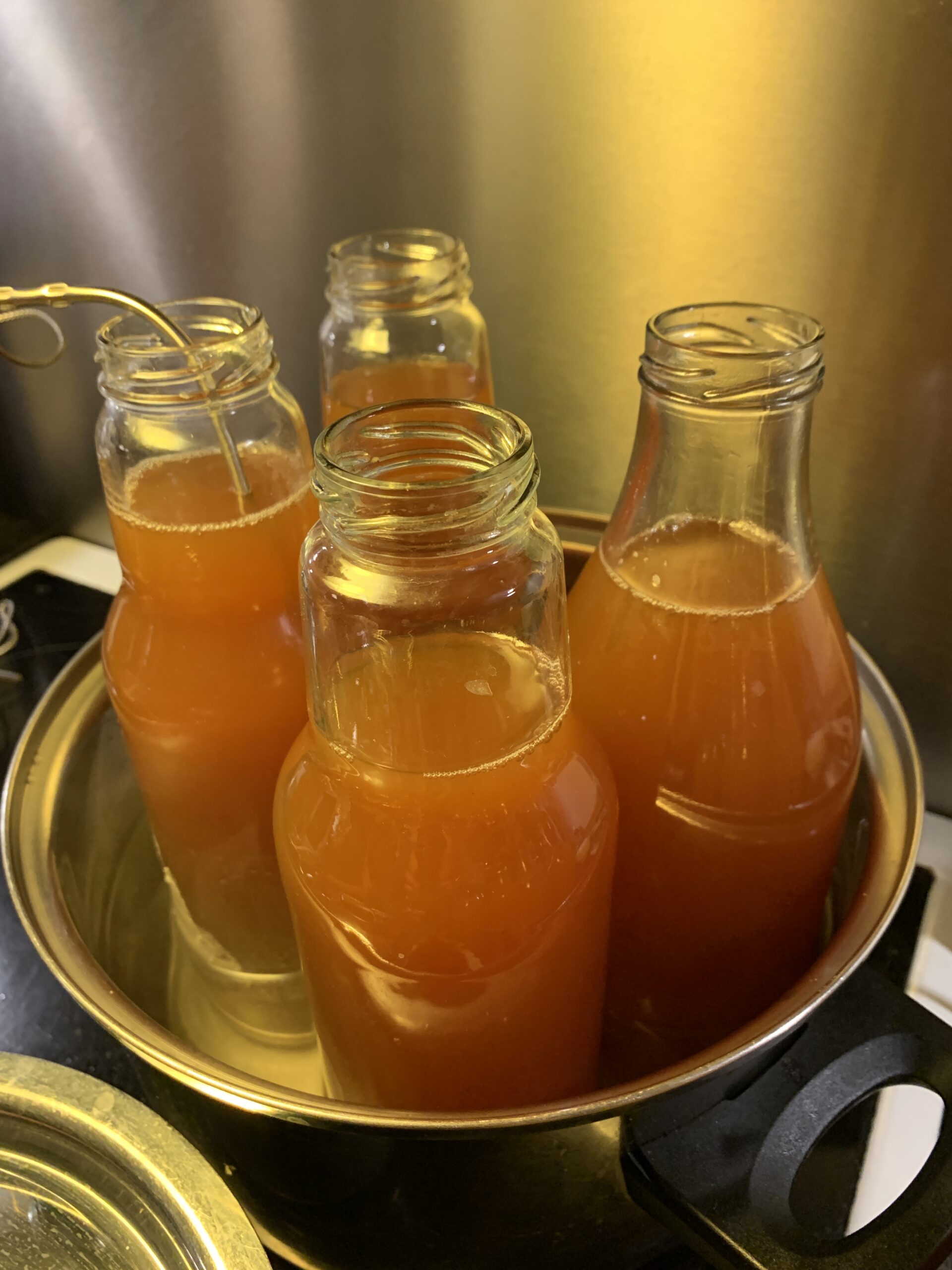When you’re brewing your own beer, it’s vital to keep an eye on the sugar levels. The sugar content in your beer is what the yeast feeds on to produce alcohol, but too much or too little can drastically affect your final product. To measure this, brewers use a tool called a hydrometer.
However, temperature can also influence your readings, which is why it’s crucial to understand hydrometer temperature adjustment.
Hydrometer temperature adjustment is the process of calibrating your hydrometer’s readings to account for variations in the temperature of your wort or brew.
In this blog post, I’m going to guide you through the process of hydrometer temperature adjustment, drawing from my own experiences as a brewer. We’ll discuss the importance of temperature, how you can adjust for it, and some tips to get the most accurate readings.
Why is Temperature Important?
The Effect of Temperature on Hydrometer Readings
First, it’s important to understand why we need to adjust for temperature. Hydrometers are typically calibrated at 60°F (15.6°C). At this temperature, their readings are most accurate. However, if your wort or brew is hotter or colder, it can throw off your hydrometer’s readings.

This is because temperature affects the density of the liquid.
In warmer temperatures, your brew is less dense, and the hydrometer will float higher, giving a lower reading than actual. Conversely, in cooler temperatures, your brew is denser, and the hydrometer will sink lower, giving a higher reading than actual.
The Importance of Accurate Readings
Accurate hydrometer readings are essential for brewing quality beer. They allow you to measure the specific gravity, or sugar content, of your wort or brew. This information is vital for calculating your beer’s potential alcohol content and monitoring the fermentation process.
How to Adjust for Temperature
Using a Hydrometer Temperature Correction Chart
One way to adjust for temperature is by using a hydrometer temperature correction chart.

These charts provide correction factors for different temperatures, which you can add or subtract from your original hydrometer reading to get an accurate measurement.
Using a Temperature-Correcting Hydrometer
Another option is to use a temperature-correcting hydrometer. These hydrometers have built-in temperature correction, which can save you the hassle of manually adjusting your readings. However, they are usually more expensive than standard hydrometers and can be harder to find.
Tips for Accurate Readings
Cooling Your Sample
Before taking a measurement, I always make sure to cool my sample down to as close to the calibration temperature as possible. This ensures that my readings are as accurate as possible, without needing too much correction.
Taking Multiple Readings
I also recommend taking multiple readings at different temperatures. This can help you get a better understanding of how temperature affects your hydrometer readings and ensure that your readings are consistent.
Conclusion: The Importance of Hydrometer Temperature Adjustment
In conclusion, hydrometer temperature adjustment is a crucial part of the brewing process. It ensures that your hydrometer readings are accurate, helping you to brew beer with the right sugar content and alcohol level. Whether you choose to use a hydrometer temperature correction chart or a temperature-correcting hydrometer, the key is to always account for temperature variations.
Here are ten quick facts to remember about hydrometer temperature adjustment:
1. Hydrometer temperature adjustment corrects for temperature-related inaccuracies in your hydrometer readings.
2. Hydrometers are typically calibrated at 60°F (15.6°C).
3. Temperature affects the density of your brew, which can throw off your hydrometer readings.
4. Accurate hydrometer readings are vital for determining your beer’s potential alcohol content and monitoring the fermentation process.
5. You can adjust for temperature using a hydrometer temperature correction chart or a temperature-correcting hydrometer.
6. Cooling your sample to the calibration temperature can help improve the accuracy of your readings.
7. Taking multiple readings at different temperatures can ensure that your readings are consistent.
8. Temperature-correcting hydrometers are usually more expensive and harder to find than standard hydrometers.
9. Hydrometer temperature adjustment is a crucial part of the brewing process.
10. Always remember to account for temperature variations when brewing your beer.
FAQs
What temperature should a hydrometer be read at?
A hydrometer should typically be read at the temperature specified by the instrument’s manufacturer. This is usually at a specific reference temperature, such as 20 degrees Celsius (68 degrees Fahrenheit) or 15 degrees Celsius (59 degrees Fahrenheit). It is crucial to ensure that the temperature of the liquid being measured is the same as the reference temperature for accurate readings.
What should a hydrometer read in water?
A hydrometer should read a specific gravity of 1.000 in pure water at a given temperature.
How do you calculate hydrometer readings?
To calculate hydrometer readings, you need to follow these steps:
1. Fill a graduated cylinder or hydrometer jar with the liquid you want to measure.
2. Gently lower the hydrometer into the liquid, ensuring it floats freely without touching the sides.
3. Wait for the hydrometer to settle and come to rest. Avoid any disturbances that could affect the reading.
4. Read the hydrometer scale at the liquid’s surface. The reading will typically be marked in specific gravity (SG) or potential alcohol (PA).
5. Take note of the temperature of the liquid as well, as hydrometer readings are temperature-dependent.
6. Adjust the reading based on the temperature using a hydrometer temperature correction chart or calculator, if necessary.
Remember, hydrometer readings are commonly used in various applications, such as brewing, winemaking, and testing battery electrolyte strength.
What if the hydrometer reading is too high?
If the hydrometer reading is too high, it indicates that the density of the liquid being measured is greater than the standard reference liquid. This could be due to a higher concentration of dissolved solids or a higher temperature. It is important to ensure that the hydrometer is calibrated correctly and that the liquid being measured is at the correct temperature for accurate readings. If the reading is consistently too high, it may indicate a problem with the liquid or the measurement process that needs to be addressed.
How do you use a hydrometer temperature correction?
A hydrometer temperature correction is used to adjust the reading of a hydrometer based on the temperature of the liquid being measured. This correction is necessary because the density of a liquid changes with temperature, which can affect the accuracy of the hydrometer reading.
To apply the correction, you typically refer to a temperature correction table or use a formula provided by the hydrometer manufacturer.
This allows you to adjust the observed hydrometer reading to the equivalent value at a standard temperature, usually 20 degrees Celsius (or 68 degrees Fahrenheit). By applying the temperature correction, you can obtain a more accurate measurement of the liquid’s density or specific gravity.
How do you interpret hydrometer readings?
To interpret hydrometer readings, you need to understand the specific scale being used. Hydrometers are commonly used to measure the density or specific gravity of liquids. Typically, a hydrometer has a graduated scale, and the reading is taken where the liquid surface intersects with the scale. The value indicates the relative density compared to the density of water. If the reading is above 1, it means the liquid is denser than water, and if it is below 1, the liquid is less dense. The specific interpretation may vary depending on the application, so it’s important to refer to the instructions or consult with experts in the relevant field for accurate analysis.




